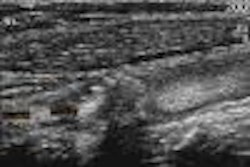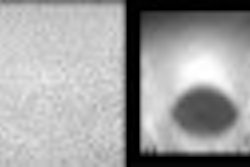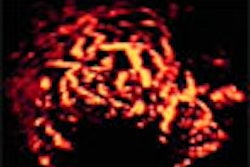(Ultrasound Review) Obstetricians at Stanford University recently investigated fetal ear lengths (EL) as a possible predictor of chromosomal abnormality. They prospectively studied 1,311 fetuses that had EL data, and sonographic soft markers for aneuploidy.
Karyotyping was normal in 96.3% and abnormal in 3.7%. "Using an EL measurement of <10th percentile for corresponding gestational age in normal fetuses as abnormal cut-off values, detection rates for chromosomal abnormalities by short EL were determined," they said. Results of the study were reported in the March issue of Ultrasound in Obstetrics and Gynecology.
A strong association has been established between trisomy 21 and other aneuploidies, and fetuses with ears that are small, low-set, or posteriorly rotated. According to the authors, 71% of abnormal karyotypes were considered significant and 32.4% of these demonstrated a short EL. A second criteria they evaluated was BPD/EL. This ratio was considered abnormal when greater than 4. They reported "the sensitivity and predictive value of increased BPD/EL ratio alone, or increased BPD/EL ratio in combination with short EL, was no better than the sensitivity and predictive value of short EL alone."
Ultrasound measurement of the EL was performed using a coronal view of the fetal head with a 3.5 MHz curved-array transducer. The maximal distance between the superior aspect to the inferior border of the external ear was measured three times, and the average length calculated. They reported that this additional measurement took 2-3 minutes. In some fetuses the measurement wasn’t possible, and these cases were not included in the study, but unfortunately they did not report the success rate for EL measurement.
"Our findings suggest that in women at high risk for fetal chromosomal abnormality, a short fetal EL measurement on prenatal ultrasound, either alone or in combination with other sonographically detectable structural abnormalities, may be a useful parameter in predicting fetal aneuploidy,"they concluded.
"Fetal ear length measurement: a useful predictor of aneuploidy?"Chitkara, U. et al
Department of gynecology and obstetrics, division of maternal-fetal medicine, Stanford University School of Medicine, Stanford, CA
Ultrasound Obstet Gynecol 2002 February; 19:131-135
By Ultrasound Review
April 11, 2002
Copyright © 2002 AuntMinnie.com



















